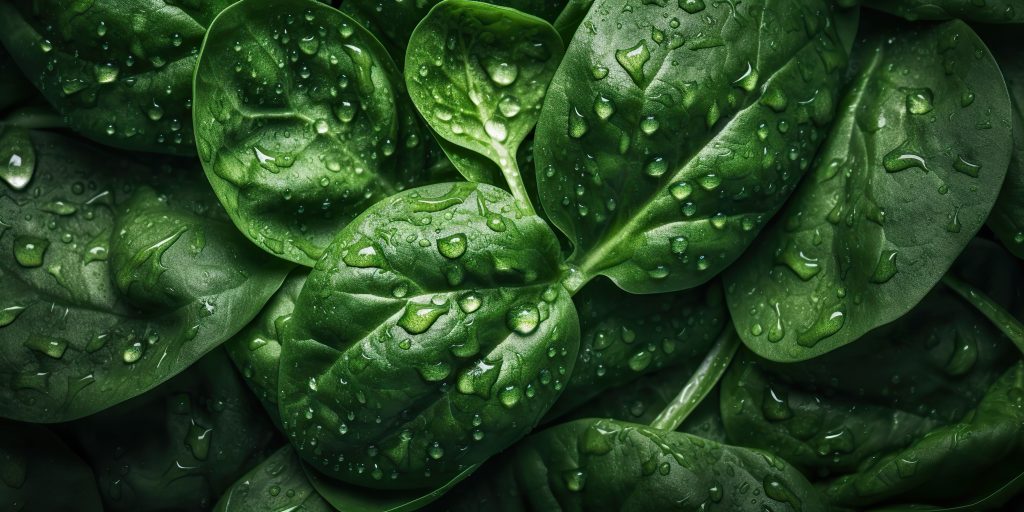
Spring’s that time of year when everything starts to shake off the winter slowdown. Nature wakes up -plants start growing again, animals come out of hibernation, and we feel that shift too. Maybe there’s a bit of winter weight or sluggishness hanging around, but as the days get warmer, we’re naturally pulled outside, craving movement and fresh air. Our bodies have an innate sense of when to reset.
In Traditional Chinese Medicine (TCM), spring is tied to the Wood element and the liver – both all about growth, movement, and fresh starts. To stay in tune with the season, TCM recommends shifting what we eat to support that natural energy. I’ve been learning about this over the past ten years, mostly through my own journey with a TCM practitioner. I’m no expert, but I’ve picked up some helpful (and honestly pretty easy) tips. Ready to explore some spring-friendly foods and learn how they can help you feel lighter, more energized, and fully prepared for the season?
Understanding Spring in Traditional Chinese Medicine (TCM)
I’ve always felt a strong connection to Traditional Chinese Medicine (TCM) – mostly because of how much it’s genuinely helped me. When nothing else even touched the pain from my Trigeminal Neuralgia, TCM was what finally brought some relief. For those who’ve followed my story, this experience was precisely what ignited my passion for nutrition and TCM in my wellness journey. It honestly changed everything for me – simple, gentle practices that helped ease years of pain and gave me back a sense of control over my body.
So, in TCM, spring isn’t just about warmer weather – it’s considered a total body reset. Every season links up with certain organs, and for spring, it’s your liver and gallbladder. Just like nature starts to wake up and expand, our bodies go through a similar process. This seasonal energy can definitely affect how we feel: physically, emotionally, and mentally. It’s a prime opportunity to refresh, get realigned, and offer our systems a little help as they shift into this more active part of the year.
So, the Five Elements Theory: Within nature’s intricate design, everything is interconnected: Wood, Fire, Earth, Metal, and Water. Each of these elements represents different qualities and aspects of life. For spring, we’re talking about the Wood element. Just think of little green sprouts pushing through the dirt, trees stretching to the sky, and that powerful feeling of new growth all around us. We also carry that same energy within, inspiring us to grow, refresh, and expand in our own lives.
Now for the Liver and Gallbladder Meridians: Imagine these as invisible energy pathways running all through you, like rivers guiding everything where it needs to go. Come spring, your liver and gallbladder meridians become super important. Your liver acts like your body’s inner traffic controller, helping things move along nicely – both physically and emotionally. The gallbladder, on the other hand, is more about keeping your thoughts clear and helping you make decisions, keeping your mind flexible. When these meridians are balanced, you feel light, motivated, and just able to go with the flow. But if that energy gets stuck? That’s when you might notice moodiness, irritability, or physical stuff like tension headaches or a tight neck and shoulders (those are my usual symptoms!).
Characteristics of Spring Energy: So, what does this “Spring energy” actually feel like? It’s that feeling of waking up on a bright, sunny morning, completely refreshed and ready to take on anything. It’s uplifting, pushes you forward, and brings a ton of new chances. But, just like too much sun can zap your energy, that Spring energy can sometimes get a little too intense, leading to feelings of frustration or restlessness.
In TCM, Spring is all about embracing that energy of growth and renewal while staying grounded and balanced. When we align with nature’s rhythms and support our liver and gallbladder meridians, we can experience the season feeling vibrant and energized.
Best Foods to Eat in Spring
In Springtime, it’s beneficial to prioritize foods that promote upward energy, such as vibrant green vegetables and sprouts. In contrast, during Winter, tightly bundled varieties such as cabbages are more suitable.
Leafy Greens:
- Spinach: In TCM, spinach is considered a cooling and nourishing food that benefits the liver and blood. Its sweet flavour and green colour are associated with the Wood element, supporting the liver’s function of ensuring smooth Qi flow throughout the body.
- Kale: Kale is also cooling in nature and is believed to clear heat and toxins from the body, making it beneficial for springtime when the liver needs support in detoxification.
- Chard: Chard is also seen as a gentle tonic for the liver and kidneys in TCM. Its slightly bitter flavour helps to drain dampness from the body, supporting the liver’s role in processing emotions and maintaining harmony within the body.

Sprouts and Young Plants:
- Alfalfa Sprouts: Alfalfa sprouts are considered a highly nutritious and cooling food in TCM. They help to clear excess heat from the body, making them beneficial for reducing inflammation and supporting the liver’s detoxification process.
- Bean Sprouts: Bean sprouts are seen as a beneficial food for the liver and gallbladder in TCM. Their sweet flavour helps to nourish Yin and Blood, while their crunchy texture supports the Wood element’s need for movement and expansion during spring.
- Microgreens: Microgreens are viewed as concentrated sources of vitality and are believed to tonify Qi and Blood in TCM. Their young and tender nature is thought to be especially nourishing for the liver and gallbladder, supporting their functions during the spring season.

Sour Foods (Limit too much):
- Lemon: Lemon is considered a detoxifying food in TCM, helping to regulate the Liver’s function of moving Qi and breaking down stagnation. Its sour flavour stimulates the liver’s secretion of bile, aiding in digestion and promoting the smooth flow of Qi. I like to kick off my morning and with a cup of warm water and lemon juice.
- Vinegar: Vinegar is believed to invigorate the Blood and dissolve stagnation in TCM. Its sour taste helps to stimulate the liver’s function of regulating Qi flow and harmonizing digestion, making it beneficial for those experiencing symptoms of Liver Qi stagnation.
Sweet and Pungent Foods:
- Sweet Potatoes: Sweet potatoes are revered in TCM for their ability to nourish the liver and promote blood circulation. Their sweet taste corresponds to the Earth element, which is associated with grounding and stability in TCM. Sweet potatoes are also rich in antioxidants and fibre, supporting liver detoxification and overall digestive health during the spring season.
- Onions: In TCM, onions are valued for their ability to regulate Qi (vital energy) and promote circulation throughout the body. Their pungent flavour and warming nature make them particularly beneficial for the liver, helping to disperse stagnation and improve the flow of Qi. Onions are also high in sulfur compounds, which support liver detoxification processes and enhance overall liver function.
- Garlic: Garlic is considered a potent medicinal herb in TCM, revered for its ability to dispel pathogens, promote circulation, and strengthen the immune system. Its pungent flavour and warming nature make it beneficial for the liver, helping to invigorate Qi and dispel dampness. Garlic is also known for its antimicrobial properties, which can help protect the liver from infection and support overall liver health during the spring season.
By adding these foods to your diet this spring, you can help your liver detoxify, promote the smooth flow of Qi and Blood, and harmonize your body’s energy for optimal health and vitality. When we opt for lighter and cleaner foods in our diet, it helps to clear out the heavy, congesting foods associated with winter.
Steer clear of heavy foods that can cause your liver to sluggish. These include dairy, fried foods and more.
Benefits of Eating Early and Having a Light Dinner
Eating early in the evening and consuming a lighter meal for dinner can offer numerous health advantages. Firstly, it allows the body ample time to digest food before bedtime, preventing discomfort and promoting better sleep quality. By going to bed with a relatively empty stomach, the body can shift its focus away from digestion and towards nighttime tasks, such as repairing and rejuvenating cells, and detoxifying the body. I have found this works really well for me as I wake up feeling more refreshed and energized.
Moreover, eating early and having a light dinner can help regulate blood sugar levels throughout the night, reducing the risk of nighttime spikes or crashes. This stable blood sugar control can contribute to more restful sleep and improved overall metabolic health. I make it a habit to have an early dinner and stop eating by 7pm (if possible).
Eating a lighter meal in the evening can also help with weight management. Having less before bed means your body is less likely to store extra calories as fat, since energy use drops while you sleep. This approach also works with your body’s natural circadian rhythm, which focuses on digestion and energy metabolism during the day.
Overall, adopting the habit of eating early and opting for a lighter meal for dinner can support better digestion, enhance sleep quality, stabilize blood sugar levels, and promote overall well-being.
Cooking Methods and Recipes
Stir-frying: Stir-frying is a quick and easy way to cook veggies while keeping them crisp and flavourful. It’s best to cook at high temperatures for a short period of time to retain as many nutrients as possible. Try making stir-fried Bok Choy with garlic for a simple and tasty dish.
Steaming: Steaming is a gentle cooking method that retains nutrients while keeping foods moist and tender. Consider steaming your foods (especially veggies) instead of boiling or roasting them. Give steamed fish with ginger and scallions a try for a light and healthy meal.
Lightly Sautéing:
Sautéing is perfect for cooking delicate vegetables like asparagus, adding a touch of flavour without overpowering them. Enjoy sautéed asparagus with lemon for a refreshing and vibrant side dish.
Raw Preparations:
Eating some raw vegetables is a great way to enjoy their natural flavours and nutrients. However, eat them in moderation because they are harder to digest, especially for people with weaker digestive systems. Try a mixed green salad with sprouts and citrus dressing for a refreshing and nutritious meal that’s quick to prepare or a morning juice with kale, spinach, cucumbers, lemon, juice and some honey.
Lifestyle Tips for Spring
Engage in Gentle Exercise: Take advantage of the mild weather by engaging in gentle exercise like walking, yoga, or stretching. It’s a great way to stay active and energized without putting too much strain on your body.
Spend Time Outdoors: I make the most of the longer days and warmer temperatures by spending ample time outdoors. When the weather permits, I take lots of walks, immersing myself in nature’s beauty and soaking up the sunshine. Whether it’s a relaxing walk in the park or a picnic with friends, being outdoors not only lifts my mood but also boosts my vitamin D levels. Connecting with nature like this helps me feel refreshed and grounded, adding an extra burst of energy to my spring routine.

Manage Stress through Mindfulness Practices: Spring can bring about a sense of renewal, but it can also be a busy and overwhelming time. Take moments throughout the day to practice mindfulness techniques such as deep breathing, meditation, or simply being present in the moment. It can help reduce stress and promote a sense of calmness and clarity.
In my experience, Spring can indeed feel like a whirlwind of activity, so I make sure to carve out “me time” to keep stress at bay. Throughout the day, I dedicate moments to mindfulness techniques like deep breathing, meditation, or simply being present in the moment. These practices help me stay grounded, reducing stress and promoting a sense of calmness and clarity amidst the busyness of the season.
Get Sufficient Rest and Sleep: With the change in seasons and time change, it’s important to prioritize rest and sleep to support your overall well-being. Aim for a consistent sleep schedule and create a relaxing bedtime routine to ensure you get enough restorative rest each night. This will help recharge your body and mind, allowing you to fully embrace the energy of Spring.
In my own journey, I’ve discovered just how crucial it is to prioritize rest and sleep, especially as the seasons shift. I religiously follow a set bedtime routine to ensure I get enough hours of rest each night. By sticking to a consistent sleep schedule and creating a relaxing bedtime routine, I’ve found that I’m better equipped to recharge my body and mind.
Traditional Chinese Medicine offers valuable insights into holistic well-being. By aligning our lifestyles with Spring’s energy, we can nourish both our bodies and spirits, fostering balance and vitality. Adding fresh, nutrient-rich spring foods to our meals not only fuels us but also honours the natural flow of the world. Let’s see this season as a chance to refresh and grow, embracing spring’s changing beauty as we thrive alongside it.